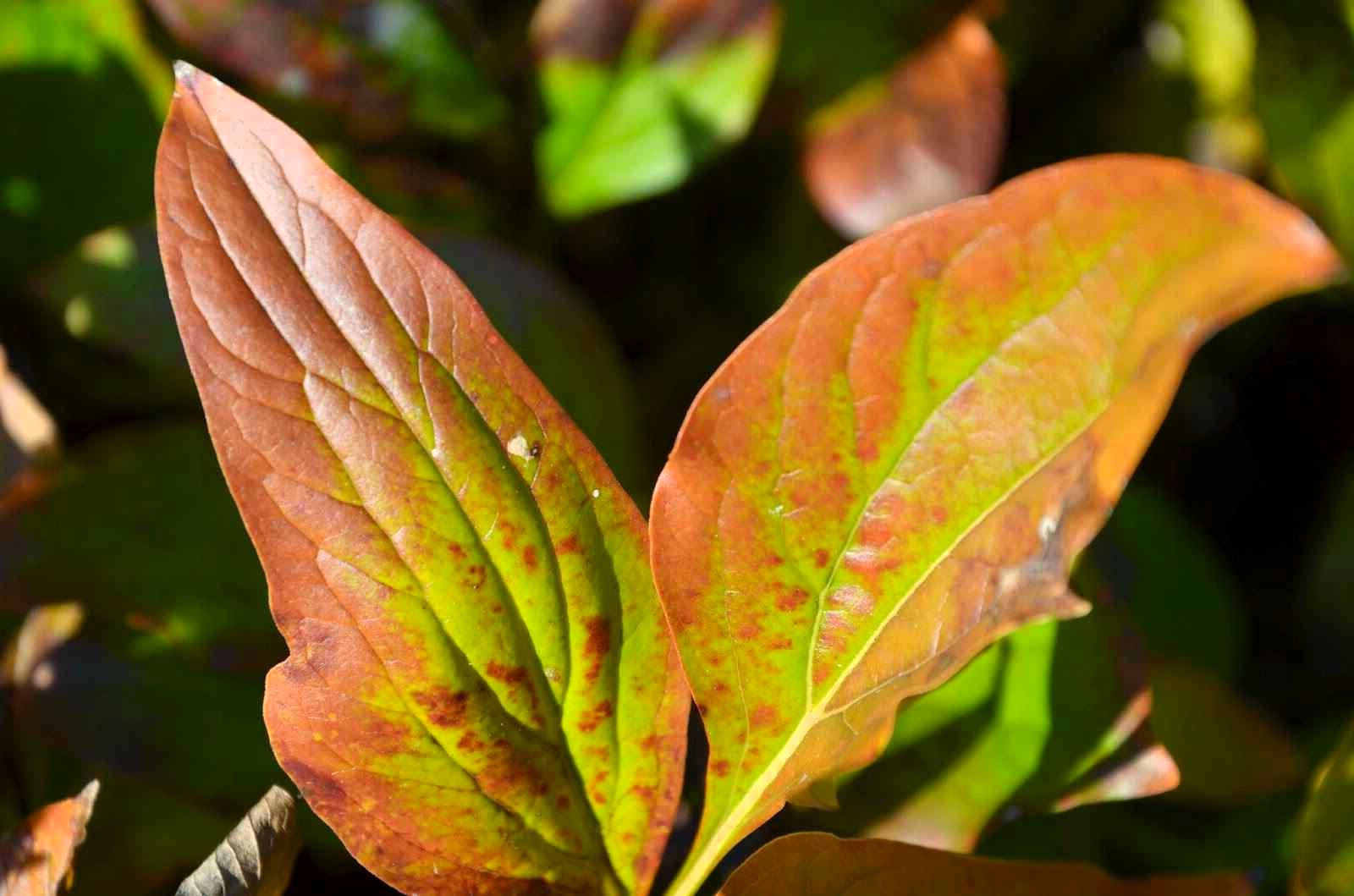Peonies are among the most beloved ornamental plants, known for their striking flowers and lush foliage. These perennial plants, native to Asia, Europe, and North America, have adorned gardens for centuries with their timeless beauty. While their blooms steal the show in late spring and early summer, the foliage continues to enhance garden aesthetics throughout the growing season. Whether in cottage gardens or formal landscapes, peonies are a versatile choice that blends beauty with resilience, making them a favorite among gardeners.
Importance of Understanding Foliage Color Changes in Peonies
Foliage color changes in peonies are more than just a seasonal phenomenon; they are a window into the plant’s health and lifecycle. From the vibrant reds and purples of early spring to the golden browns of late fall, these transitions reflect the plant’s response to its environment. For gardeners, recognizing these changes can offer insight into soil health, climate effects, and potential pest or disease issues. By understanding the reasons behind these color shifts, you can provide better care for your peonies and ensure their vitality year after year.
Role of Foliage in Overall Plant Health and Garden Aesthetics
Peony foliage plays a critical role in the plant’s overall health. The leaves are the powerhouse of the plant, conducting photosynthesis to provide energy for growth and flowering. Healthy foliage also supports the development of strong roots and ensures the plant stores enough nutrients for the next growing season.
Beyond its functional role, foliage significantly contributes to garden aesthetics. The dynamic color changes throughout the year add texture, contrast, and seasonal interest to landscapes. Whether it’s the bold red tones of emerging shoots or the lush greens of summer, peony foliage provides year-round visual appeal that complements other plants in the garden.
2. Stages of Foliage Color Changes in Peonies
Early Spring (Emergence Stage)
As spring begins, peony shoots emerge from the ground with remarkable color. The first signs of life come in the form of reddish, burgundy, or deep purple hues, a striking visual contrast to the still-bare garden. These dark colors are the plant’s natural defense mechanism against the cold and harsh spring sunlight. The deeper pigmentation, known as anthocyanins, acts as a protective shield to help the tender young shoots survive any late frost or extreme cold. This stage marks the start of the peony’s growth cycle and is essential for preparing the plant for the warmer months ahead.
Mid-Spring (Growth Phase)
By mid-spring, the peony foliage transitions to a lush, vibrant green. As the plant matures, chlorophyll production takes over, giving the leaves their signature green color. This phase is crucial for the peony’s overall health, as chlorophyll allows the plant to perform photosynthesis, converting sunlight into energy. The vibrant green foliage at this stage supports the growth of the plant and provides the necessary nutrients for the upcoming blooms. Healthy green leaves not only indicate a thriving plant but also play a key role in ensuring that the peony is ready to flower at its peak.
Late Spring to Summer (Peak Growth)
As the peony flowers bloom during late spring to early summer, the green foliage reaches its peak. The leaves continue to provide essential energy through photosynthesis, fueling the blooming process. At this stage, the foliage remains consistent, maintaining a rich green color. The leaves support the flowers by channeling nutrients and energy, ensuring that each bloom is as vibrant and healthy as possible. Peonies require plenty of sunlight and water during this phase to sustain their peak growth, and the dense, healthy foliage contributes significantly to the overall beauty and success of the plant during the flowering season.
Late Summer to Early Fall (Fading and Transition)
As the peak growing season ends, the peony foliage begins to transition, with the green leaves slowly turning yellow. This change occurs as the plant’s photosynthetic activity slows down in preparation for dormancy. The yellowing of the leaves can be influenced by several environmental factors, such as temperature fluctuations, sunlight exposure, and the overall health of the plant. Though this is a natural process, extreme heat or drought can speed up the yellowing, potentially signaling that the plant is under stress. During this stage, it’s essential to ensure the plant continues to receive adequate water and nutrients to ease the transition.
Fall (Dormancy Preparation)
By late fall, the peony foliage undergoes its final transformation, turning golden yellow or brown as the plant prepares for dormancy. The leaves begin to die back, signaling the end of the growing season. This is a normal part of the plant’s lifecycle, and the shedding of the leaves helps the peony conserve energy for the winter months. Although the plant may appear to be lifeless during this stage, the roots are still active below ground, storing nutrients for a new burst of growth come spring. Gardeners can prune back the foliage once it has fully withered to prevent the spread of diseases and pests over the winter.
3. Factors Influencing Foliage Color Changes
Variety of Peony
Different varieties of peonies exhibit distinct foliage characteristics. For instance, tree peonies and herbaceous peonies can display different shades and patterns in their leaves. Tree peonies may have more vibrant hues of red or purple in their early spring stages, while herbaceous varieties often have a smoother transition to green. Hybrid peonies, which are a cross between tree and herbaceous types, can show a mix of both foliage traits. Understanding these variations helps gardeners choose the best type of peony for their garden’s aesthetic and care requirements.
Climate and Weather
The climate plays a significant role in how peony foliage changes color. Cooler temperatures in early spring encourage deeper red and purple hues, while warmer climates may lead to quicker green transitions. Sunlight exposure also affects how intense the colors appear; plants in shaded areas may have less vibrant colors compared to those in full sun. Seasonal changes—such as early frost or excessive heat—can alter the timing of these color changes, making it crucial to monitor weather conditions closely and provide the appropriate care.
Soil and Nutrient Levels
The health of the soil directly impacts the color and vitality of peony foliage. Soil rich in essential nutrients supports robust foliage development. A lack of key nutrients, such as nitrogen, phosphorus, or potassium, can result in pale or discolored leaves. Ensuring proper soil drainage and providing regular compost or organic fertilizers helps maintain optimal conditions for the peony’s growth, contributing to healthy, vibrant foliage throughout the season. Soil testing can also reveal specific nutrient deficiencies, allowing for targeted amendments to improve the plant’s overall health.
Plant Health
Peony foliage color can be a strong indicator of the plant’s health. Healthy, vibrant green leaves reflect good care, while stressed plants may show signs of discolored or damaged foliage. Factors such as pest infestations, diseases, or improper watering can cause the leaves to yellow prematurely or develop spots. Identifying the underlying cause of discoloration early on helps address potential issues before they affect the plant’s overall growth. Regular monitoring and maintenance, including pest control and disease management, ensure the foliage remains in peak condition.
4. How to Enhance and Maintain Foliage Health
Tips for Fertilizing and Watering Peonies
To support vibrant foliage, peonies require consistent watering and proper fertilization. Providing the right amount of water, especially during dry spells, prevents the leaves from wilting or drying out. Deep watering is preferred, as it encourages strong root growth. Fertilizing with a balanced fertilizer, particularly one with nitrogen, helps promote healthy, green foliage during the growing season. Avoid over-fertilizing, as excessive nutrients can harm the plant.
Mulching and Soil Care
Mulching is an effective way to maintain healthy peony foliage. A layer of organic mulch helps conserve moisture in the soil, reduces weed competition, and insulates the roots during temperature fluctuations. It’s essential to use well-decomposed mulch to avoid suffocating the plant. Additionally, ensuring the soil has good drainage is crucial to prevent waterlogging, which can lead to root rot and unhealthy foliage. Regularly refreshing the mulch layer and adding compost can also provide a continuous source of nutrients, promoting vibrant leaves throughout the growing season.
Pruning and Cleanup Practices
Proper pruning and cleanup practices are vital for maintaining the health and appearance of peony foliage. Pruning should be done after the flowering season when the blooms have faded. Removing dead or damaged leaves helps prevent the spread of diseases and allows the plant to focus energy on healthy growth. In late fall, once the foliage has withered, cutting back the plant’s stems and leaves helps prepare the peony for dormancy. Proper cleanup also reduces the risk of pest infestations and prepares the plant for a healthy return in the spring.
5. Visual Appeal of Foliage Throughout Seasons
How Foliage Color Changes Add Seasonal Interest to Gardens
Peony foliage undergoes stunning transformations that can add visual interest to your garden throughout the year. The rich reds and purples in early spring capture attention, while the vibrant green foliage in mid-spring to summer provides a lush backdrop for blooming flowers. As the season progresses, the gradual shift to yellow and gold in fall enhances the garden’s autumnal appeal. These seasonal color changes make peonies a versatile and eye-catching addition to any garden, providing beauty long after the flowers have faded.
Pairing Peonies with Other Plants for Complementary Foliage Colors
To create a dynamic garden, pair peonies with other plants that complement their foliage color changes. For example, planting peonies alongside plants with contrasting foliage colors, such as hostas or lavender, can create a striking visual effect. The dark greens of surrounding plants can highlight the lighter green or yellow hues of the peony foliage, adding depth and texture. Additionally, consider planting other perennials that offer colorful fall foliage to extend the visual interest of your garden through the colder months.
Using Peony Foliage in Garden Design for Texture and Contrast
Peony foliage can be used creatively in garden design to add texture and contrast. The broad, rounded leaves of peonies create a full, bushy appearance that works well with more delicate or spiky plants like ornamental grasses or conifers. By considering the peony’s foliage alongside other garden elements, you can design a garden that remains aesthetically pleasing throughout the growing season, from the vibrant spring foliage to the mellow autumn tones.
6. Common Issues with Foliage Color
Premature Yellowing or Browning: Potential Causes
Premature yellowing or browning of peony foliage can be caused by several factors, including pest infestations, diseases, or environmental stress. Overwatering, underwatering, or exposure to extreme temperatures can cause the leaves to deteriorate prematurely. Pests like aphids and fungal infections can also lead to discoloration. It’s important to closely monitor the plant for signs of stress and take corrective actions, such as adjusting watering practices, applying natural pest controls, or treating fungal infections, to maintain healthy foliage.
Remedies and Preventive Measures to Address Foliage Problems
To prevent foliage issues, it’s crucial to maintain a consistent care routine. Ensure proper watering practices—deep watering in the morning to prevent fungal growth and root rot. Avoid overhead watering, as it can encourage fungal diseases. Applying a balanced fertilizer provides the necessary nutrients for strong, healthy foliage. Regularly inspect the plant for pests or signs of disease, and use organic treatments when needed. Proper soil care, including adequate drainage and mulching, can also help prevent stress-related color changes in the foliage.
7. Conclusion
In conclusion, the color changes in peony foliage are a beautiful and natural progression that reflects the plant’s health and growth cycle. By understanding these stages and the factors that influence them, gardeners can ensure their peonies remain healthy and vibrant throughout the year. Monitoring foliage health, providing the right care, and appreciating the seasonal appeal of peony leaves will allow you to enjoy the multi-seasonal beauty of these stunning plants. Peonies are truly a garden treasure, offering visual interest and dynamic color year-round, from early spring to late fall.

